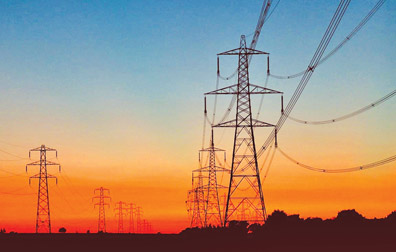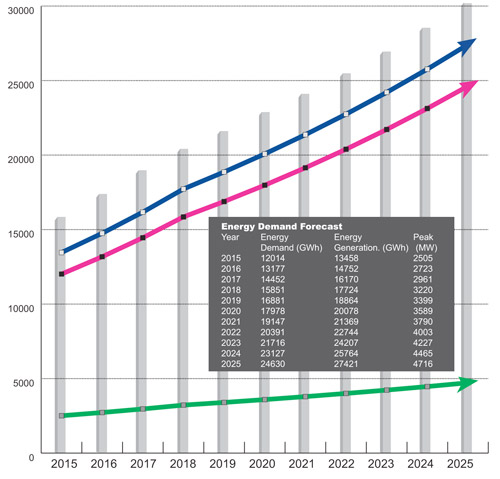|
Deficit of 500 megawatts forecast:
Will the lights go out
by Rukshana Rizwie
Sri Lanka faces an electricity shortage as the
National Grid struggles to keep up with increasing growth. Will Sri Lankans have
to invest in generators or will the new regime find ways to keep those lights
on?
A looming power crisis is forcing the Ceylon Electricity Board to scramble in
search of extraordinary measures to keep lights on in Sri Lanka at a time when
the government has stalled the commissioning of new power plants.
Kamani Jayasekara, Deputy General Manager, Transmission and Generation Planning,
Ceylon Electricity Board (CEB) warned that a power crisis in 2018 and 2019 were
imminent, certain and unstoppable. “Our peak demand on Wednesday (22) this week
was 2,230 megawatts while the supply was 2,800 megawatts with a daily demand of
35 Gwh per day,” she said. “There will be an increase in demand, but as of now
we cannot cater to it. By 2018 there’s going to be a deficit of 500 megawatts.”
500 megawatt deficit
Jayasekara said, unless the government does something now, any attempt to bridge
the deficit in the system by that year would be futile. “There is a margin for a
surge in demand, but we have little reserve in the system to balance it,” she
added. This load shedding she says, will ultimately lead to power cuts that
would be unstoppable and unfeasible to rectify instantly.
She said, the CEB cannot instruct the Mahaweli Authority to discharge water for
power generation on their own because it’s the same reservoirs that disburse
water for both drinking, domestic and irrigation upstream. “Every year, the coal
power plant shuts down for 45 days for scheduled maintenance, at which time any
surge could result in load shedding,” she said.
According to the CEB’s most recent statistics, as of last week, the country was
depending 58% on hydro-powered plants, 33% on coal and 9% on oil and wind.
Japan yet to approve LNG proposal
 While the Sri Lankan government has asked the Japanese government to convert its
proposed 250 Megawatt coal power plant in Sampur to Liquified Natural Gas (LNG)
what there has been no confirmation from the Japanese government, yet. While the Sri Lankan government has asked the Japanese government to convert its
proposed 250 Megawatt coal power plant in Sampur to Liquified Natural Gas (LNG)
what there has been no confirmation from the Japanese government, yet.
A similar request made to the Indian government regarding a proposed 250
Megawatt Power Plant in Sampur, too awaits final confirmation.
Environmental concerns prompted the government to convert both coal projects to
cleaner LNG.
An official from the Power and Energy Ministry who spoke to the Sunday Observer
said,
“Sampur is not a sensible location for an LNG plant. The ideal scenario is to
have an LNG power plant at the load centre.” He said, “if we were to take it to
Sampur we would have to spend millions of rupees on transmission lines and new
infrastructure. Ultimately, the consumer will have to pay for that.”
He added that while oil prices may be low, experts have projected that prices
will go up in the next few years. “With oil there is a question of fuel
security,” he said. “At the same time Sri Lanka has never fully studied an LNG
as the only option, which if we are to start now would take years to realize.”
He said, if we are to proactively pursue an LNG plant we will also need to set
up a chemical industry, transportation and other infrastructure which is costly,
as well as time consuming.
Asoka Abeygunawardana, Executive Director of the Energy Forum said, even if the
government decided today to go ahead with a coal or LNG power plant, all efforts
would not be able to halt a power crisis since it will take years before a plant
is commissioned and made operable.
“If the government intends to have a fixed terminal, it will take at least four
years for the construction to be complete. The only option would be to pursue a
floating terminal instead of a fixed one, ” he said.
Questionable long term generation plan
 “If we had forged ahead with the Long Term Generation Plan proposed by the CEB,
we could have averted such a crisis,” said Abeyagunawardena. “Now we will have
to look at an aggressive plan to increase 200 megawatts by 2018, and 300
megawatts by 2022.” “If we had forged ahead with the Long Term Generation Plan proposed by the CEB,
we could have averted such a crisis,” said Abeyagunawardena. “Now we will have
to look at an aggressive plan to increase 200 megawatts by 2018, and 300
megawatts by 2022.”
New plan
The Long Term Generation Plan prepared by the CEB was rejected by its regulator,
the Public Utilities Commission (PUCSL) which found inconsistencies in the plan.
The PUCSL has written to the CEB to clarify some of the proposals and revert
back with the generation plan in April this year. An official at the CEB told
the Sunday Observer that a new plan was being discussed, which has not been
finalized yet.
Accelerating plans for diesel power plant
Energy Expert Dr. Thilak Siyambalapitiya said, the government will be seen fast
tracking diesel powered plants if it were to stop the lights from fading out on
the country.
“Diesel powered plants are expensive, but effective in emergency situations such
as these,” he said, referring to the impending power crisis. “At present we are
not going ahead with any of the planned power plants, neither do we have any new
plants scheduled, which is a tragic reality.”
He added, it could have been easily averted if the government had let the CEB
proceed with the construction of the power plant. “Politicians cannot calculate,
we can, and so can the CEB. That’s how we know of the energy deficit and
forecast it,” he said. |

